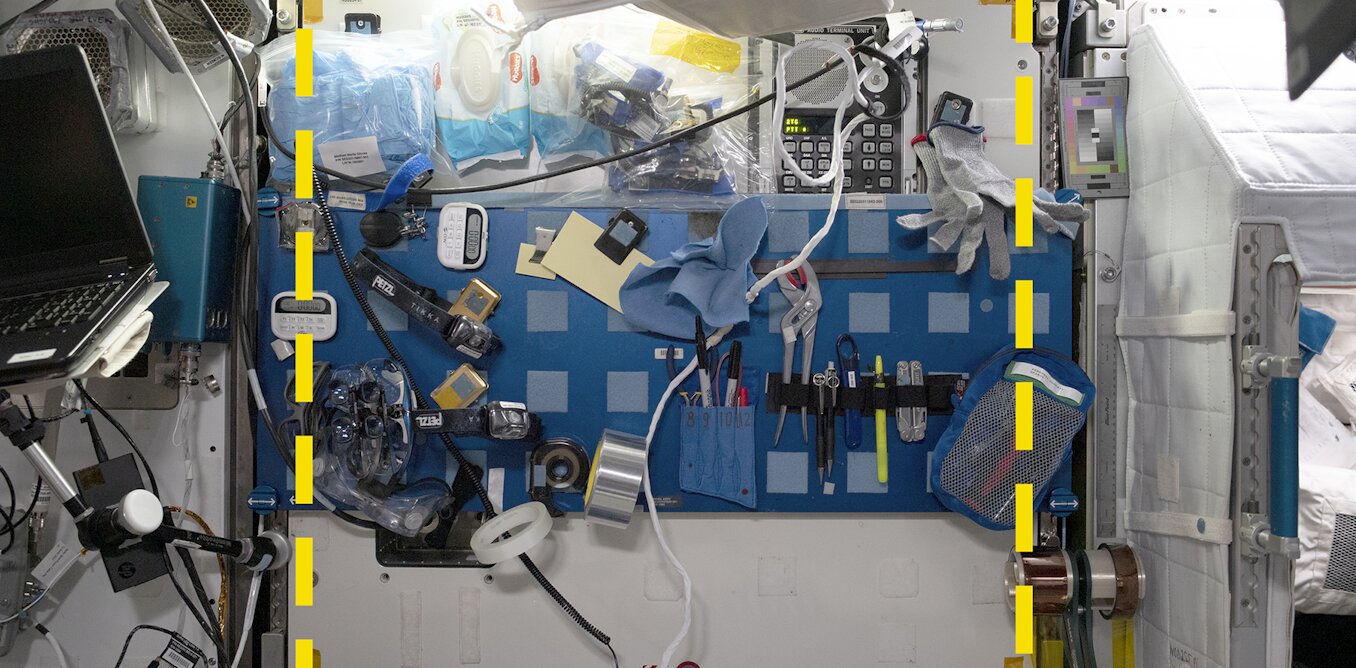The first archaeological excavations were carried out on the International Space Station. Of course, no one dug with a shovel, but astronauts, under the guidance of experts from Earth, studied the “cultural layers” that had accumulated over 30 years in the orbit of this artificial facility.

Archaeology on the ISS
The International Space Station (ISS) has been operating for more than 25 years. That’s a remarkable amount of time, so scientists decided to do something that you’ve only read about in fantasy books – archaeological research in space. And recently they published the first results in the journal PLOS ONE.
Of course, there is no soil on the ISS that can be dug up with a shovel. But astronauts always hang something on the walls: documents, photos, symbols. The crews are constantly changing. During their stay in Earth orbit, the station was visited by about 280 people. The purpose of the various objects that were once attached to the walls with Velcro so that they would not get lost in weightlessness was forgotten over time, they were removed and replaced with something new.
In this way, entire “cultural layers” were formed, such as those found on the sites of ancient human settlements or dormitories that had not been cleaned for a long time. Therefore, scientists decided to apply to them a method that has proven itself in assessing the attractiveness of an area of the Earth for detailed archaeological research.
These are called “test pits.” Archaeologists select small areas on the surface and excavate them to the maximum available depth, carefully removing layer by layer. They see what they can find in each one. The ISS has decided to use the same method.
How the “excavation” went
As part of a study called SQuARE, archaeologists on Earth identified 5 promising sites on the inner surface of the ISS that they found most interesting. They were the size of a square with a side length of 1 m and were located in the work, science, sports and living areas of the station. The astronauts defined another such zone themselves.
Then the “digging” began. Every day, the astronauts photographed what was at that time on the selected sites. Experts noted that the use of Velcro created an effect similar to the accumulation of “cultural layers” under the influence of gravity, albeit temporary.
To understand the cultural context, the archaeologists also used NASA’s photo archive. It provided information about who was on the station at what time, what each person did there and what relationships they had with other crew members.
What interesting things have scientists discovered
One of the most interesting was Squares 03 in the American service module. There are four bunks here. The module is also used for docking spacecraft. However, the largest “test pit” is located precisely on the panel dedicated to maintenance.
Scientists studied the site for 60 days and found that on 50 of those days it was not used at all before the actual maintenance. Most of the time it was used only for storing items that were often used in completely different parts of the ISS. As for scientific experiments, which can also be carried out in this zone, they were practically not carried out during the specified period.
Another interesting place was Squares 05. It is located in the sports area near the observation module Cupola. It has no clear purpose, so its use was even more chaotic. The scientists also learned a lot of interesting things about other parts of the station.
According to phys.org
